Rollins College Women’s Tennis: Small School With A Big Tradition
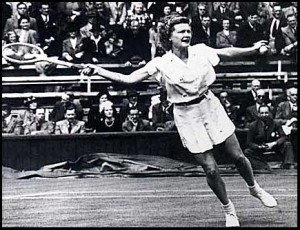
A four-time champion at the U.S. Nationals, Pauline Betz-Addie claimed the 1942 title while still attending Rollins College.
Teenage girls patrolling the courts at Grand Slam tennis tournaments is nothing new for the sport of women’s tennis. However, unlike the players of today, some of the stars from the past didn’t just juggle tennis schedules, they also often juggled their college course schedules.
Greats of the game including Doris Hart, Helen Wills Moody, Althea Gibson, Billie Jean King and Helen Hull Jacobs all competed in Grand Slam tournaments while also balancing their academic calendar.
Surprisingly, the college with the grandest tradition as home to women’s tennis greats of the past is a tiny school located just outside of Orlando, Florida.
With less than 2,000 students, Rollins College is a small liberal arts college popular with students from the northeast and known for producing champion water skiers, golfers, tennis players and occasionally even a movie star (most notably Buddy Ebsen and Anthony Perkins).
In 1939, Rollins became one of the first colleges to provide women with a chance to play collegiate tennis. That quickly led to an influx of great talent and Grand Slam Champions.
The list of Rollins women’s tennis alums includes winners of all four Grand Slam singles and doubles titles as well as players who earned world top 20 rankings. With six former players and one former coach among the inductees at the Intercollegiate Tennis Association (ITA) Hall of Fame, Rollins has greater representation in the Hall of Fame than any other college program.
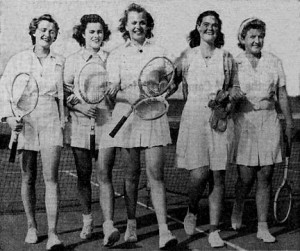
Rollins Tennis Team - New York Times. Feb.1, 1942 Pauline Betz (far left), Nancy Corbett, Peggy Welch, Jane Metcalf, Dorothy Bundy (far right)
“It [having the most graduates in the Hall of Fame] speaks volumes about the quality of the players that have been here at Rollins,” said current head coach and former Rollins player Beverly Buckley. “It is phenomenal what these women did and especially that they accomplished it without prize money”
The early influx of tennis stars to Rollins included players who were already making a name for themselves in the women’s game.
Dorothy “Dodo” Bundy Cheney, who in 1938 had become the first American women to win the Australian Open, enrolled at Rollins in 1941. She twice reached the semifinals of the United States Championship while attending Rollins.
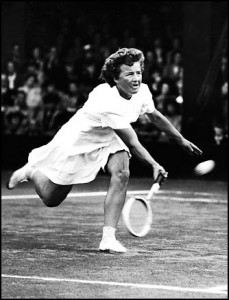
Dorothy Bundy Cheney was the first American to win the Australian Open.
After graduating in 1945, she went on to reach the semifinals of both Wimbledon and the French Championship in 1946. Over the next six decades, Cheney claimed nearly 300 USTA tournament titles.
Pauline Betz Addie, a member of the Rollins Class of 1943, reached the finals of the U.S. Nationals in 1941 and then claimed the title three consecutive times from 1942 through 1944.
“Pauline Betz Addie was still a student at Rollins when she was competing in and winning the United States Championship,” Buckley noted. “That is something you will never see again.”
After losing in the finals of the 1945 U.S. Championships, in 1946 she won the Wimbledon Championship and reached the finals of the French Championship. She then claimed her fourth U.S. Championship to earn the number one ranking in the world.
She turned professional in 1947 and though there was no coordinated tour for women as there is today, she enjoyed a successful 13-year career.
“There was no organized tour for them to go to,” Buckley said, “so they really had to go out and make things happen on their own.”
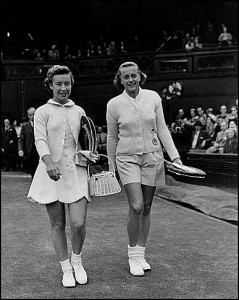
Betty Rosenquest Pratt (right) faced Maureen Connelly in the 1954 Wimbledon semifinals.
The wave of tennis greats continued with Betty Rosenquest Pratt, Class of 1947, who was ranked in the top 10 in the world for three years and reached the semifinals of the U.S. Nationals and Wimbledon. In 1956, she lost to Althea Gibson in the semifinals of the U.S. Nationals 12-10, 6-2 just nine months after having a baby.
Perhaps the greatest of all the former Rollins players was Shirley Fry Irvin, from the Rollins Class of 1949. Fry first participated in the U.S. Nationals at the age of 14 in 1941 and by the time she came to Rollins was creeping up the national rankings.
Fry Irvin was ranked in the top 10 in the world every year from 1944 to 1956. In 1948, she reached the finals of the French Championship for the first time and in 1951 she defeated her doubles partner, Doris Hart, in three sets in the French final for her first Grand Slam singles title.
The team of Fry Irvin and Hart claimed 11 Grand Slam doubles titles.
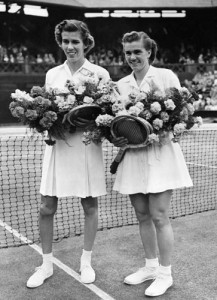
Shirley Fry Irvin (right) and her doubles partner Doris Hart are two of only five players in tennis history to win all four Grand Slam tournaments in both singles and same-sex doubles.
In 1956, after a brief retirement, Fry Irvin enjoyed the finest season of her career. She won the Wimbledon Championship for the first time and then defeated Althea Gibson in straight sets to win the U.S. Championship for the first time.
Fry Irvin capped off her career by becoming only the third woman to that point to win all four Grand Slam titles by defeating Gibson to win the Australian Championship. She is one of only five players in tennis history to have won the tennis Grand Slam in both singles and same-sex doubles.
For many years, women’s tennis was the only sport at Rollins playing at the Division I level–the other sports competing at Division II–so even as other schools started fielding women’s teams, the program continued to attract some of the top players in the nation.
Nancy Corse Reed, Class of 1956, reached as high as number 16 in the world rankings and later went on to be ranked number 1 in every senior age group.
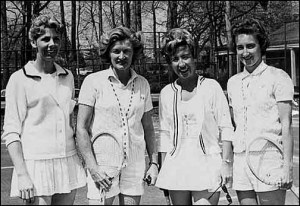
Pictured here in 1966 are (from left to right): Carolyn Bentley, Rollins grad Pauline Betz Addie, former Grand Slam champion Maureen Connolly and Rollins grad Nancy Corse Reed.
Other former Rollins standouts that enjoyed success on the world stage include Wendy Overton (’69), Mona Schallau Guerrant (’71) and Wendy White Prausa (’82).
Professional players became eligible for the Grand Slam Championships in 1968 and the women’s professional tour started in 1970. This began to make it harder for players to choose college over a pro career.
White turned professional after winning the AIAW National Championship (the NCAA didn’t hold a women’s tennis championship until 1982) as a sophomore in 1980. However, she continued her studies at Rollins and remains the only woman to turn professional and still graduate on time from college.
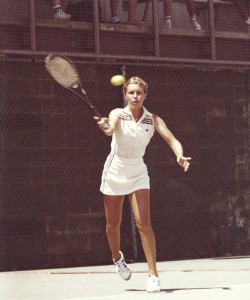
Wendy White Prausa is the only player to ever graduate on-time from college while also playing on the women's professional tour.
During more than a decade on the professional tour, White reached as high as 22nd in singles and 18th in doubles.
“With the demands today, you won’t see another player do both [college and the professional tour],” Buckley commented.
Buckley said that the changing demands of both professional and collegiate tennis now force young players to make a choice between playing professionally and attending college.
“It is a tough choice for some young players,” Buckley said. “It seems the prime age for a women’s player as a professional is also about the same time they would be in college.”
Though for a while Buckley was seeing many players that she and others were recruiting make the choice to try the professional game, she says that has changed in recent years.
“I think many players are seeing just how difficult it is to make it at the professional level,” Buckley said. “There are many players now coming to college that would have turned professional a few years ago.
For that reason, Buckley says that the quality of player at the college level is at an all-time high.
However, Buckley knows that the days of a player from Rollins or any other college making it big on the professional tour are long gong.
“It is just a very different situation,” Buckley said. “The best pros aren’t even thinking about college and when top college players do turn pro they have an uphill battle.”
Buckley points to one of her own former All-Americans, Anzela Zguna, as a prime example. Zguna was a two-time national Division II Player of the Year at Rollins, but was never able to crack the top 300 once she turned pro.
“Anzela was the best athlete I ever coached,” Buckley said, “but she was 27 when she turned pro and it was hard for her to crawl her way up the rankings.”
As the women’s game continues to evolve it is becoming increasingly unlikely that another women’s college program will ever be able to rival the storied tradition of Grand Slam greatness enjoyed by Rollins College.
Photos are from the ITA Hall of Fame website: http://www.itahalloffame.com/










